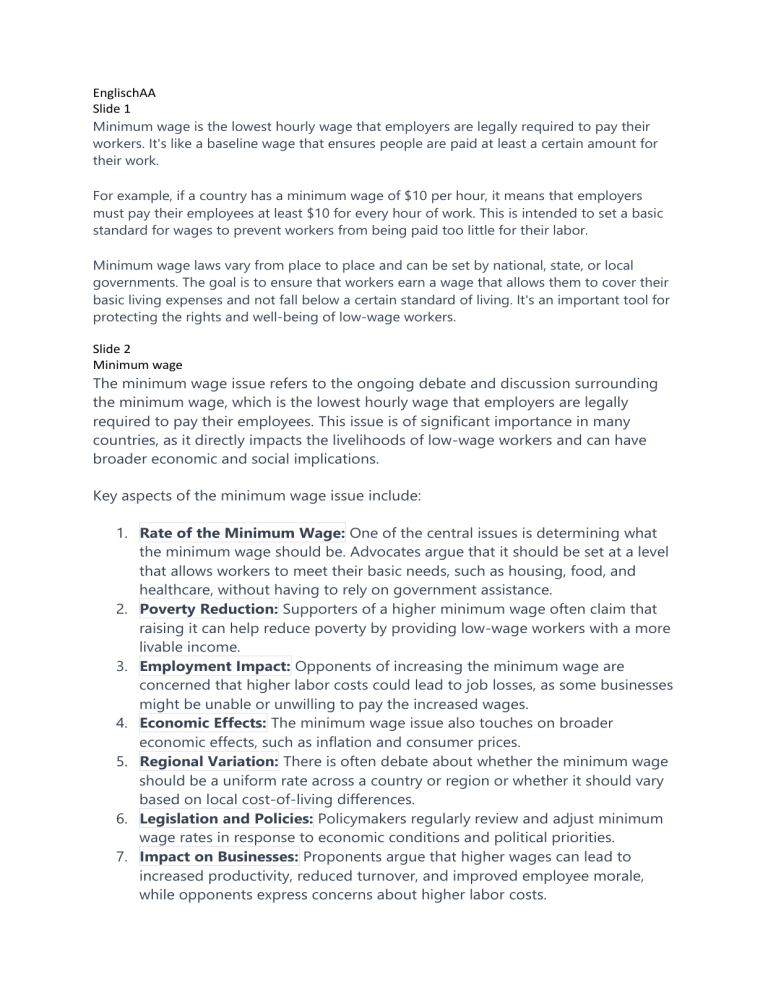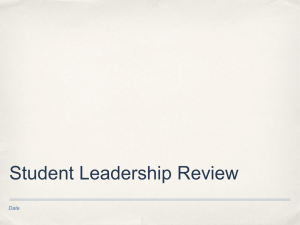
EnglischAA Slide 1 Minimum wage is the lowest hourly wage that employers are legally required to pay their workers. It's like a baseline wage that ensures people are paid at least a certain amount for their work. For example, if a country has a minimum wage of $10 per hour, it means that employers must pay their employees at least $10 for every hour of work. This is intended to set a basic standard for wages to prevent workers from being paid too little for their labor. Minimum wage laws vary from place to place and can be set by national, state, or local governments. The goal is to ensure that workers earn a wage that allows them to cover their basic living expenses and not fall below a certain standard of living. It's an important tool for protecting the rights and well-being of low-wage workers. Slide 2 Minimum wage The minimum wage issue refers to the ongoing debate and discussion surrounding the minimum wage, which is the lowest hourly wage that employers are legally required to pay their employees. This issue is of significant importance in many countries, as it directly impacts the livelihoods of low-wage workers and can have broader economic and social implications. Key aspects of the minimum wage issue include: 1. Rate of the Minimum Wage: One of the central issues is determining what the minimum wage should be. Advocates argue that it should be set at a level that allows workers to meet their basic needs, such as housing, food, and healthcare, without having to rely on government assistance. 2. Poverty Reduction: Supporters of a higher minimum wage often claim that raising it can help reduce poverty by providing low-wage workers with a more livable income. 3. Employment Impact: Opponents of increasing the minimum wage are concerned that higher labor costs could lead to job losses, as some businesses might be unable or unwilling to pay the increased wages. 4. Economic Effects: The minimum wage issue also touches on broader economic effects, such as inflation and consumer prices. 5. Regional Variation: There is often debate about whether the minimum wage should be a uniform rate across a country or region or whether it should vary based on local cost-of-living differences. 6. Legislation and Policies: Policymakers regularly review and adjust minimum wage rates in response to economic conditions and political priorities. 7. Impact on Businesses: Proponents argue that higher wages can lead to increased productivity, reduced turnover, and improved employee morale, while opponents express concerns about higher labor costs. 8. Social Justice and Labor Rights: Some advocates argue that all workers, regardless of their job or location, should earn a wage that allows them to lead a decent life. Policymakers must consider these factors when making decisions about whether to raise, lower, or maintain the minimum wage and at what level. It's important to note that the specific circumstances and policies surrounding the minimum wage can vary widely from one country to another and even within regions of a country. Slide 3 Statistics Slide 4 Why minimum wage is good Slide 5 Photos

